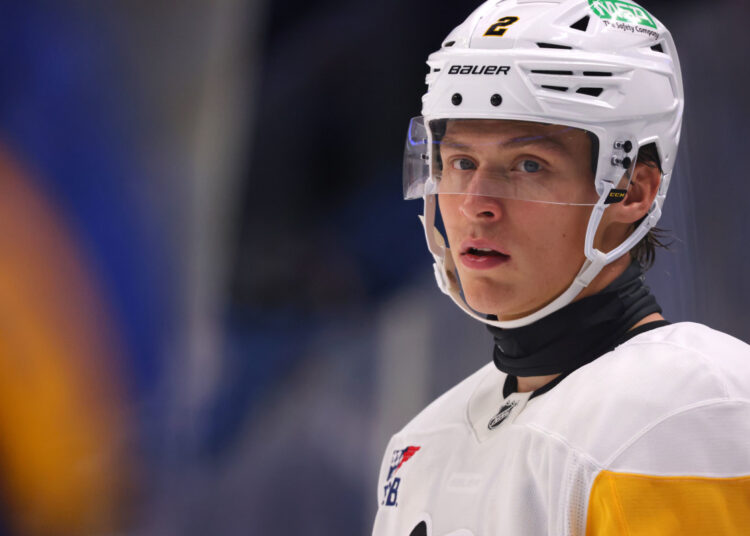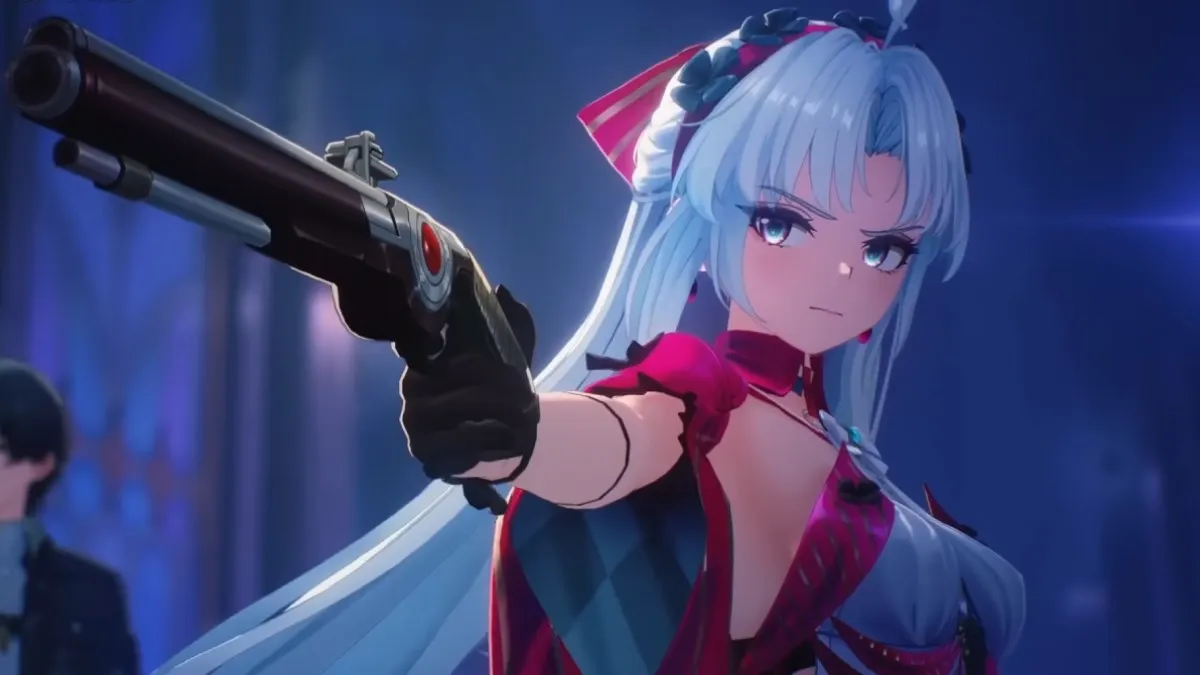The Pittsburgh Penguins are headed into the new calendar year of 2025 with a mixed bag of expectations.
Early on in the 2024-25 season, many had already written them off after a disastrous 7-12-4 start that saw them in the bottom-five of the league. However, they had an unprecedented stretch from Nov. 27 to Dec. 23 – the start of the holiday break – in which they went 9-3-1 against some of the league’s best teams to catapult themselves back into the thick of the wild card race in the Eastern Conference.
Penguins GM and POHO Kyle Dubas said at the start of 2024-25 that the Penguins had “a chance to change the story” this season. It’s no secret that Dubas is trying to execute a rebuild-on-the-fly – which was said pretty much verbatim in his opening presser when he mentioned modeling the formula of teams like the Washington Capitals and L.A. Kings – and that strategy does not figure to change.
However – now at 17-17- 5 – they sit just one point out of the second wild card spot, three points out of the first, and nine points out of the third spot in the Metropolitan Division with a matchup on the horizon against the struggling Carolina Hurricanes, who occupy that position.
In other words, the jury is still out on whether or not these Penguins can, indeed, “change the story” this season. Regardless of whether or not they pull it off, 2025 still has the potential to be a transformative year for the organization.
Here are three reasons why.
1. They have legitimate prospect talent on the brink
As it stands now, the Penguins will still have the likes of veterans such as Sidney Crosby, Evgeni Malkin, Erik Karlsson, Kris Letang, Bryan Rust, Rickard Rakell, and Michael Bunting – all of whom help them win hockey games – going into 2025-26.
But they will also have some legitimate talent at key positions pushing for roster spots as early as the end of 2024-25 – and certainly out of training camp in 2025.
Defenseman Owen Pickering – Pittsburgh’s 21st overall pick in 2022 – has arrived early, is playing top-four minutes, and has already shown an ability to be a legitimately good defender at the NHL level. Harrison Brunicke – one of Pittsburgh’s second-round picks (44th overall) in 2024 – nearly earned a nine-game trial in training camp and should have a good shot at a roster spot next season. Even Emil Pieniniemi – currently playing for Finland at the IIHF World Junior Championship – could push for a spot in 2025-26.
As far as the forward group, 2021 first-round pick Tristan Broz, 22, is impressing in Wilkes-Barre/Scranton, Pittsburgh’s AHL affiliate, with a team-leading 12 goals in 27 games. The same can be said for 21-year-old Ville Koivunen – acquired as part of the Jake Guentzel trade last spring – who has six goals and 22 points in 27 games.
In addition, Vasily Ponomarev (five goals, 12 points in 17 games) is a good two-way forward prospect and is showing why, and Rutger McGroarty (three goals, 12 points in 25 games) is putting his hockey IQ on display and gaining some traction after a slow start. Both should also push for roster spots.
Finally, Joel Blomqvist and Sergei Murashov are both legitimate goaltending prospects. Blomqvist, almost 23, impressed in his first taste of NHL action earlier this season with a .904 save percentage across eight games – which includes one very poor start against Dallas on Nov. 11. And Murashov has been lights-out in Wheeling – Pittsburgh’s ECHL affiliate – registering a 13-2 record with a 2.13 goals-against average and a .930 save percentage this season.
Sergei Murashov has won 12 games in a row for Wheeling. Has not lost since 11/1. In that time he’s boasting a 94.1 save percentage and a 1.66 goals-against average. I’ve put together a short tape of some of his work. A longer one is coming on YouTube, consider this a teaser. pic.twitter.com/1k7e4iqyTQ
— Jesse Marshall (@jmarshfof) January 2, 2025
All in all, there is some good talent waiting in the wings at all the positions that the Penguins need talent for next season. They’ll still need to draft an elite center at some point, but that’s not needed quite yet.
2. They have a ton of draft capital already – with more to come
According to PuckPedia, this is how the next three NHL Drafts are shaping up for the Penguins so far:
The Penguins have all of their first-round draft picks, four second-round picks, and seven third-round picks – including three in 2025 alone – already. And, given some of the pending-unrestricted free agent contracts they are still likely to sell off this season, they should acquire even more draft capital:
– Marcus Pettersson is the Penguins’ most valuable asset, will likely be one of the top defensemen on the market, and – depending on the market – could land a first-round pick. However, a 2025 second-round pick, a mid-round pick, and a prospect is a more realistic take, especially since Pettersson is in the midst of a down year.
– Matt Grzelcyk is a cheaper defensive option for a contender at $2.75 million and is on pace to obliterate his previous career high of 26 points with a 40-point pace this season. Advanced metrics also have him as one of the league’s elite power play quarterbacks. A team looking for an offensive boost on their blue line may pony up a second-round pick. A third-rounder seems like a given at this point if his pace tracks.
– Drew O’Connor and Jesse Puljujarvi are cheap middle-six options who likely won’t net much in return at this point, but there are – apparently – some teams still interested in O’Connor despite his 32-game goal drought that was just broken against the Detroit Red Wings on Tuesday. Anthony Beauvillier, however – on pace for 19 goals this season, which would be the second-highest mark of his career – should net a third-rounder in return.
– Although not a pending-UFA, goaltender Alex Nedeljkovic comes cheap for one more season, has been putting together a good stretch of games, and should be able to get a decent return for a team in need of goaltending help. And there are definitely plenty of those.
And why is this draft capital so transformative? With an excess amount of draft capital, the Penguins can both use some of that to draft well and use some of it to leverage in trades for younger talent that can help them next season.
Having that flexibility is vitally important for a team rebuilding on-the-fly like the Penguins are.
3. They’ll have a lot of cap space to work with
When combining the pending-UFAs and RFAs (potentially) coming off the books, the cap space the team already has, retained salaries falling off, and the expected cap increase of almost $5 million, the Penguins already track to have approximately $24.5 million in cap space to work with.
Of course, some of that cap will be used to fill necessary spaces on the roster, and some RFAs – such as Philip Tomasino – will likely get an offer. However, this isn’t even accounting for other trades that might occur – including Nedeljkovic or someone like Bunting or Rakell – to maximize draft capital and free up even more cap space.
But given those young, cheap prospects who will certainly fill some of those open roster spots in 2025-26, this should still leave a lot of room for the Penguins to leverage some of their draft capital – and, perhaps, an expendable prospect or two – to go after some legitimate young talent in the trade market as well as sign some impact free agents who can make a difference next season.
All in all, Dubas and the Penguins have to get a lot right at the 2025 trade deadline and during the coming offseason. But – if they do hit on both – 2025 has a chance to be a truly transformative year for the Penguins’ franchise and to set up Crosby and the core for one final legitimate push at a Stanley Cup championship.
Read the full article here



























Discussion about this post